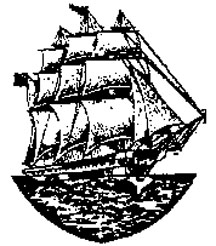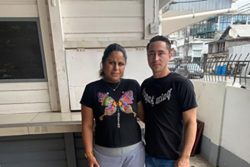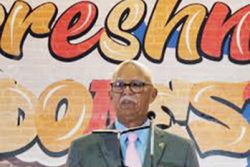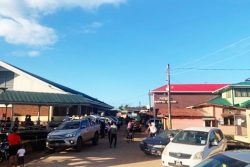This article briefly explores the creation and solidification of African ethnic identity and the incorporation of Guiana into the world economy and argues that historically the intensification of ethnic contestation between Africans and other ethnic groups was a consequence of the structural contradictions that lie beneath the construction and reproduction of ethnicity in Guiana in order to support capitalism and its inequitable division of labour. In so doing, this article has interpreted ethnic conflict and contestation as representative of resistance against the enforced ethnicised labour construct and theorises that they undermine capitalist enterprise. In other words, this article contends that labouring populations were deliberately divided, ethnicised and manipulated to suit the needs and demands of global capitalism and the plantation system in Guiana. Over time, this division became concretised and various strategies were used to create/delineate/highlight differences such as stereotyping and deliberate acts were committed and condoned to support one group at the expense of the other – all intensifying notions of difference and consequential conflicts.
It is only by conducting a long historical analysis that the true character of ethnic contestation is revealed, as although ethnic contestation appears to be concentrated between Africans and Indians since the late 19th century, simply reviewing this period obscures the contestation and conflict that historically emerged between and among all groups which were centred around resistance to and or protection of a group’s positioning in the division of labour. In other words, the contention is that ethnic contestation and clashes are not as they are often interpreted in the literature on Guiana, emanating out of simple competition for entitlement or resource or for domination or fear of being dominated or assimilated or as a consequence of the actions of manipulative politicians.
This article, employing an argument used by world-systems scholar Wilma Dunaway, offers an arguably more adequate interpretation that ethnic conflict and contestation in Guiana were essentially manifestations of attacks on or resistance to the capitalist world economy as it sought to simultaneously universalise and separate through ethnicisation.
The world-systemic process that is of particular interest to this article is the continual incorporation of new territories and/or peoples into the global capitalist economy since it is through the historical systemic process of incorporation, along with nation building, that capitalist colonisers successfully separated peoples into superior ethnic groups and marginalised ethnic subalterns to defend inequalities. Incorporation, it is argued, becomes necessary when the capitalist core experiences an economic crisis and it is by expanding and incorporating new areas and sectors as time evolved, that world capitalism has endured.
Dunaway categorises the incorporation process as one that is never complete and constantly bedeviled by resistance. Incorporation into the world-system meant that humans were coalesced into a commodity-producing work force that functions in households that sponsor capitalism through the unpaid work of women and ethnic minorities. Moreover, natural resources are reorganised and regulated for capitalist production including land which is transformed into a commodity that can be possessed and transferred. To reinforce the incorporation into the capitalist world economy, a civilisational project commenced, resulting in annihilation, assimilation, amalgamation or accommodation of resident and imported groups and peoples. Incorporation necessitates the creation and illumination of difference and the establishment of a hierarchical people structure to rationalise exploitation and imbalanced treatment. Although incorporation cannot be prevented by Indigenous populations, the latter nonetheless consistently engage in acts of resistance to secure their established manner of existence and their ecological spaces. In other words, Dunaway argues that consequently, incorporation is ‘a dialectical historical process that involves both structural articulation with the world-system and human resistance against the capitalist civilisational project’.
Constructing the African identity and insertion of Africans into the Guianese division of labour
The Dutch were forced to arrive at what Sister Mary Noel Menezes calls treaties of alliance and friendship with the Indigenous population to boost security against internal and external enemies, having failed in their attempts to enslave the majority of the Indigenous populations and permanently link them to plantation labour using lands they had seized. Resistance from Indigenous populations to being defined in terms of their location in the newly incorporated labour construct was effective largely because of the Indigenous groups’ knowledge of the terrain which made it easier for them to escape, their susceptibility to European diseases and Dutch need for Indigenous populations’ military assistance when faced with attacks from the French, British and Spaniards.
Consequently, despite the steadily increasing demand for plantation labour after the 1650s in Essequibo when the Dutch settlers really commenced sugar cultivation, for the most part it was largely unfulfilled with Berbice and Essequibo planters experiencing severe shortages until the Dutch government discarded the monopoly system in 1730 and permitted private individuals to vie with the Dutch West India Company to lawfully trade in African slaves. When Britain and France, the main slave trading states captured Demerara, Essequibo and Berbice between 1781 and 1784, this resulted in further development in the African slave trade. When the Netherlands regained control of the three colonies in March 1784, the slave trade again suffered a decline until 1796 when Britain took control of the three colonies.
Individuals who were brought as slaves came predominantly from various areas and tribes in West Africa to Essequibo, Demerara and Berbice and although these individuals embraced a differing range of cultural and religious customs, their specific identities were brutally extinguished until they were simply identified as sub human slaves. The Africans were categorised as a tainted people as a consequence of their racial/cultural/ethnic origin and this validated capture, occupation, exploitation and the installation of mechanisms to ‘administer’ and ‘train’ them. ‘Knowledge’ was produced that described all non-European groups, in particular Africans as “abnormal” whose behaviour needed reforming so that they could become ‘acceptable’. Slavery was therefore rationalised as a civilising mission.
The main stereotype of Africans was that they were lazy. This categorisation was crucial to the justification of the slave economy. The alleged innate laziness of Africans was used as the rationale for maintaining forced labour since slavery would both assist in organising their physical strength while simultaneously neutralising their character defects. In essence, forced labour was rationalised as the humanitarian effort on the part of the European colonisers to correct character defects, particularly in Africans, who comprised the great majority of labourers on the plantations and the small numbers of Amerindians were also used as slaves on the plantations until 1793 when the Dutch authorities completely outlawed the usage. Meanwhile, Africans’ ‘superstitious’, ‘heathen practices’ were viewed as destructive and debased and as a result needed to be expunged from their consciousness. Africans on the contrary needed to mimic the Anglo-Saxon Christian culture which was identified as the model for all to follow. The aim of their coerced and manipulative Christianising mission was to culturally destroy the ethos of the various peoples and create a culturally homogeneous society on the basis of European culture and the construction of the African character in dehumanising terms was vital to the maintenance of a social structure during and after slavery that legitimised the privileged position of Europeans in the domestic political economy.
European attempt to establish total hegemony over the Africans in Guiana and produce an incorporated system conflicted with the policy of establishing an ethnic hierarchy in the society and consequently, the Europeans were not entirely successful nor did they completely destroy the cultures of this ethnically subjugated group who constantly resisted their domination. Thus the brutal slavery system was relentlessly challenged by various types of resistance emanating from the African slaves that are hard to measure. These various forms of resistance undoubtedly had an economic cost as slavery above all was an integral part of the global economic system. Resistance had negative consequences on the profitability of plantation economies and work efficiency. Additionally, there were longer term costs to replace poorly maintained or deliberately destroyed plantation equipment and there were costly security strategies and apparatus to maintain the status quo.
Specifically, resistance manifested itself in both violent and non violent forms and included slothfulness, impertinence, damaging plantation tools, faking illness, stealing, abortion and infanticide, poisoning plantation owners, arson, running away and armed rebellions. Rebellions however were relatively uncommon in Guyana and most of the Americas. Guyana nonetheless witnessed two of the most significant slave rebellions that occurred in the Americas – specifically the 1763 rebellion in Berbice and the 1823 uprising in Demerara. The first rebellion started in Berbice in February 1763 and persisted for a little over one year. In the history of the Americas, apart from the successful revolution in the 1790s in Saint Domingue, this Berbice revolt came closest to toppling European control, emancipating the slaves and launching an independent black society than any other slave uprising. The 1823 rebellion, along with the 1816 Barbados rebellion and the 1831 Jamaica uprising, helped to convince Britain to pass an act in 1833 that abolished slavery in British Guiana and the remainder of the British Caribbean from 1 August 1834.







